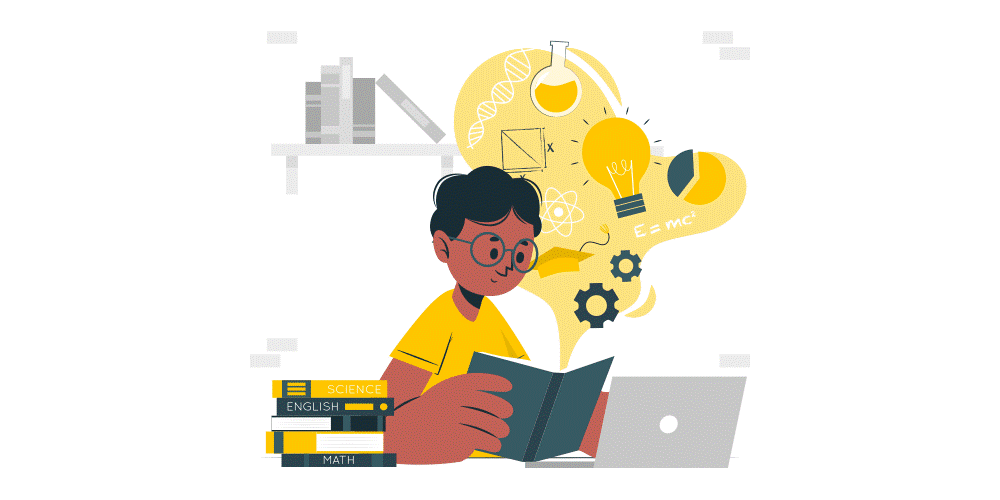Learning is a lifelong process, and with the right strategies, you can significantly accelerate your learning curve. Whether you want to grasp a new skill, understand a complex concept, or absorb information quickly, there are effective techniques that can help you learn anything in just one hour.
In this article, we’ll delve into actionable steps and insights that empower you to become a more efficient learner, while also discussing the science behind rapid learning.
Learning in a Time-Effective Manner
Learning a new skill or concept can feel overwhelming, especially when time is limited. However, with the right approach, you can make the most of a single hour and emerge with a solid understanding. Here’s a step-by-step strategy to help you do just that:
- 1. Set Clear Goals
Before you start, define what you want to achieve within the hour. Having a clear objective provides direction and helps you stay focused.
- 2. Activate Recall Techniques
Instead of passively reading or watching, engage with the material actively.Summarize key points, ask yourself questions, and explain concepts as if you were teaching them to someone else.
- 3. Utilize Spaced Repetition
Review the material at spaced intervals. This technique enhances long-term retention by reinforcing your memory.
- 4. Visualize and Mind Map
Create mental images or mind maps to connect different concepts. Visual aids enhance understanding and recall.
- 5. Multisensory Learning
Engage multiple senses while studying. Combining visual, auditory, and kinesthetic elements improves comprehension and memory.
Breaking Down Complexity
Learning complex subjects becomes manageable when you break them down into smaller components:
- 1. Deconstruct Concepts
Divide complex topics into smaller, digestible chunks. Focus on mastering one aspect before moving on to the next.
- 2. Find Key Connections
Identify the relationships between different components. Understanding how they relate can help you grasp the bigger picture.
- 3. Relate to Prior Knowledge
Connect new information to what you already know. This creates a cognitive bridge that aids in assimilation.
Effective Time Management
Efficient time management is crucial for accelerated learning:
- 1. Pomodoro Technique
Work in focused intervals, typically 25 minutes, followed by a short break. This maintains your concentration and prevents burnout.
- 2. Prioritize and Focus
Identify the most important aspects to cover. Avoid unnecessary details that might slow you down.
- 3. Minimize Distractions
Create a distraction-free environment. Turn off notifications and find a quiet place to learn.
Leveraging Digital Resources
The digital age offers numerous resources for rapid learning:
- 1. Online Courses
Enroll in courses that provide structured learning paths on Perfect Essay Writing. Many platforms offer quick courses tailored to specific subjects.
- 2. Educational Apps
Apps offer interactive learning experiences. They often include quizzes and games that enhance retention.
Learning from Experts and Peers
Learning from others accelerates your understanding:
- 1. Collaboration
Study with peers and discuss concepts. Different perspectives can shed light on difficult areas.
- 2. Seek Mentorship
Finding a mentor accelerates your learning journey. Experienced individuals can provide insights and guidance.
Embracing a Growth Mindset
A growth mindset fuels rapid learning:
- 1. Overcome Fear
Don’t fear failure. Mistakes are part of the learning process and offer valuable lessons.
- 2. Persistence
Keep pushing forward, even when the going gets tough. Consistent effort yields impressive results.
Applying Rapid Learning Across Fields
Rapid learning techniques are versatile:
- 1. Languages
Use flashcards and language learning apps to grasp basic vocabulary and phrases quickly.
- 2. Technical Concepts
Break down technical terms into relatable analogies. Experiment with hands-on examples.
- 3. Artistic Skills
Practice and repetition are key. With guidance, you can learn to create art in a short time.
The Science Behind It
Understanding the brain’s capacity to learn helps you optimize your approach:
- 1. Neuroplasticity
The brain’s ability to rewire itself enables rapid learning. Regular stimulation strengthens neural connections.
- 2. Cognitive Techniques
Mnemonic devices, association, and visualization improve memory and comprehension.
Conclusion
In just an hour, you can absorb valuable knowledge and skills. By combining active learning techniques, effective time management, and a growth mindset, you unlock your rapid learning potential. Embrace learning as a lifelong journey, and each hour becomes a building block toward mastery.




